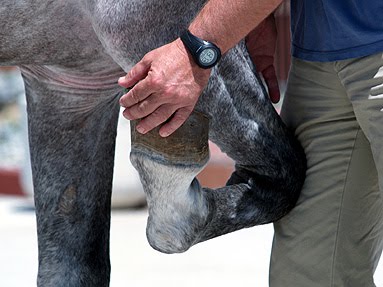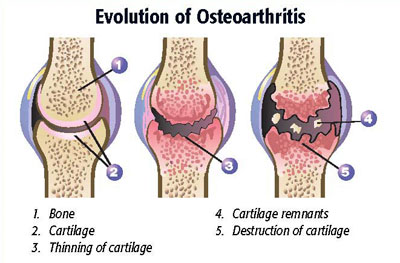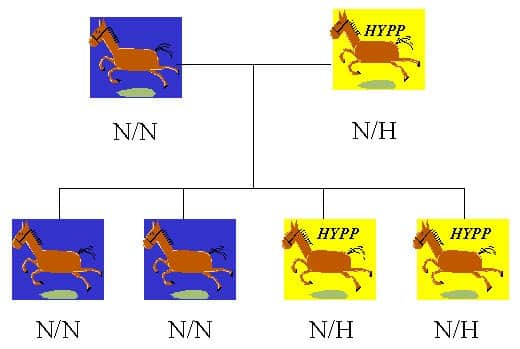![]() One of the more popular products used in an effort to prevent or treat horse joint disease is called Legend®. Legend® is a brand of hyaluronan (it was always called hyaluronic acid before, and for the purposes of easy typing, let’s call is HA). It’s injected into the horse’s jugular vein, and it’s supposed to have all sorts of wonderful benefits for the horse’s joints.
One of the more popular products used in an effort to prevent or treat horse joint disease is called Legend®. Legend® is a brand of hyaluronan (it was always called hyaluronic acid before, and for the purposes of easy typing, let’s call is HA). It’s injected into the horse’s jugular vein, and it’s supposed to have all sorts of wonderful benefits for the horse’s joints.
And, frankly, I think using it is one big waste of money. And I’ll tell you why.
QUICK ASIDE: If you’ve already made your mind up, really, I won’t be offended if you don’t read any farther. But, really, there’s a lot of reason to think that the stuff can’t work, and a lot of reasons that people think things work, when they don’t (CLICK HERE). Worth thinking about, anyway.
Now I get that just about everyone is concerned about their horse’s joints. Lameness from joint disease is a big cause of poor performance, and ultimately results in many horses being unable to do their jobs. So any product that says it can cure, prevent, or treat lameness is bound to get some attention, particularly if its heavily promoted, and even better if it it approved by the United States Food and Drug Association (like Legend®).
UPSIDE
Legend® has a bunch of things going for it. It’s appeal is undeniable. I mean, it’s got just about everything that anyone could want!
2. It can be injected intravenously. That means that it’s easy. Heck, it’s so easy that just about anyone can give it. Easy treatments are, well, easy. Which is one reason why there aren’t very many pediatric neurosurgeons.
3. Since it’s injected into the horse’s bloodstream, it can go just about anywhere in the horse’s body. That’s gotta be a good thing.
4. Since it can go everywhere, it can get to just about every joint. Another plus.
5. It has essentially no side effects.
6. It’s easy to get, whether it be from your veterinarian, trainer, on-line pharmacy, or even your friend next door (well, not so sure about the last one, but if your friend has horses, it’s not out of the realm of possibility).
7. It is given with a whole lot of good intentions.
DOWNSIDE
1. It’s pretty expensive (although, some people, the expense doesn’t seem to matter much).
2. There’s almost no way it can work, at last from a pharmacological standpoint. Otherwise stated, as appealing as the drug is psychologically (“Oh, boy, I can help my horse’s joints and all I have to do is give him an IV injection!), Legend® is almost totally implausible medically. And there are a couple of reasons for that.
WARNING: There’s a certain, “D’uh” factor associated with some of my comments, below. I’m not trying to insult anyone. But the reasons that Legend® almost certainly can’t work aren’t really that hard to understand, even though no one seems to want to talk about them. So here we go.
1. For a drug to work, it should be in the horse’s body. (Like I said, “D’uh.”) After HA is given intravenously, it’s HA’s time in the body is extremely short. After 3 hours, what’s been given IV can’t be detected at all. You can CLICK HERE to read about it. But if it’s going to work (as in, really do something for the horse’s body), it has to work not only fast, but at rocket-speed.
NOTE: It’s been my experience that people who are using IV HA tend to give it once a month or so, mostly because it’s too expensive to give more often than that (for most folks, anyway). By my calculations, if you give it at that frequency, and a month has 30 days in it (depending on the month, of course), that makes exactly 29 days, 21 hours in which there is not any Legend® in your horse’s system.
2. A substance isn’t likely to be therapeutic if it’s already in the horse at higher doses than are being given. The horse’s body is always making HA. The horse’s own body produces 1 – 4 times the recommended IV does of Legend® every single day. Claiming that this is likely to provide a good therapeutic effect is the same concept as carrying on a conversation at a loud concert and then feeling good that you’re significantly increasing the noise. There’s so much noise going on at the concert anyway that no one is going to notice one more conversation. In that same vein (pun intended), there’s little reason to think that giving a little bit of a substance that’s always in the bloodstream – and at higher concentrations – will make any difference at all to the horse’s body that is receiving it.
BOTTOM LINE: It is pretty hard to understand how giving such a relatively small dose of a substance, that lasts such a short amount of time in the horse’s body, could make a clinical difference in an animal that is producing the substance continually, and producing it in greater amounts than that which is administered “therapeutically.”
From a scientific standpoint, there is a little bit of support for the product, mostly from when the drug was first approved, in the late 1990’s. There was also one experimental study at Colorado State University that concluded that the 12 (that’s right, 12 – that’s a problem in some animal studies, that don’t use a lot of animals, which is good for animals, but bad for strong conclusions) treated horses got better in some things, but not others, when measured 72 days after treatment. There was also a study presented at the American Association of Equine Practitioners meeting not long after which didn’t show an effect in preventing joint problems in young racehorses. And, in a 2014 study in horses, it also didn’t do much of anything, when given in combination with a couple of other things (CLICK HERE).
Now, you’d might think that, given the mostly negative studies, they company would be trying to do some research to make sure that their product worked. But, honestly, it seems like there’s little reason at all for the company to do more research. After all, they’ve got the product out on the market, and they’ve sold over 2.5 million doses.
MATH NOTE: If horse owners pay $100 per dose (I’m trying to make the math easy – you could pay more, or less), that’s $250 million of Legend® over the past 15 years. Not bad. Once a product has been approved, there’s little reason to keep doing studies that might put a dent in sales.
Of course, given the excitement generated by having the product on the market, it was only natural that people would want to try IV HA in other species. I mean, it’s such an easy treatment. So, the species that was chose was dogs. So in one study, conducted in 2005, in dogs with experimental and naturally occuring osteoarthritis, respectively, they found that giving IV HA made no difference at all. Another study in 2006, concluded that there were fewer cell deaths in dogs given IV HA that had experimentally created osteoarthritis, but it’s hard to say what that really means. Finally – and adding more evidence to the contention that IV HA can’t work – a 2012 study in rats found that HA, given in the vein, is removed very, very rapidly in that species, as well.
But other than that, it seems that clinical research into IV HA seems to have pretty much stopped.
And that’s curious, too. You’d think that the big market for such a product might be in humans – but in humans, there’s no research at all. I mean, really, what person with arthritis wouldn’t be thrilled to be helped by a simple shot? Given the potential market, one might reasonably wonder why the most lucrative market of all isn’t being mined.
HINT: In humans, you could never get a drug approved after doing a study on 46 people, or a few rats or dogs. You’d need a big study, and pretty clear evidence of effectiveness. Which is also probably at least one reason why there’s no “Legend®” for people.
The bottom line is that in spite of some positive conclusions from a couple of small studies, the plausibility problems make it extremely unlikely the “Legend®” can be effective. I certainly don’t consider it a first choice – or even a second or third choice – in treating horses that have existing joint problems. And as far as “preventing” joint problems, that’s just a big can of worms because there’s no way to predict if an individual horse will ever develop them. Sort of like selling rhinoceros repellant.
The only surefire direct harm from giving “Legend®” to your horse will come to your pocketbook. It’s certainly safe, so you don’t have to worry about hurting your horse if you use it. And, if you’re willing to pony up the cash for it, and you feel better for having given it to your horse, that’s fine, I guess. But if you’re looking for a product that’s likely to have some important therapeutic effect on your horse’s joints (as opposed to making you feel good for having done something), it’s probably best to look elsewhere.












